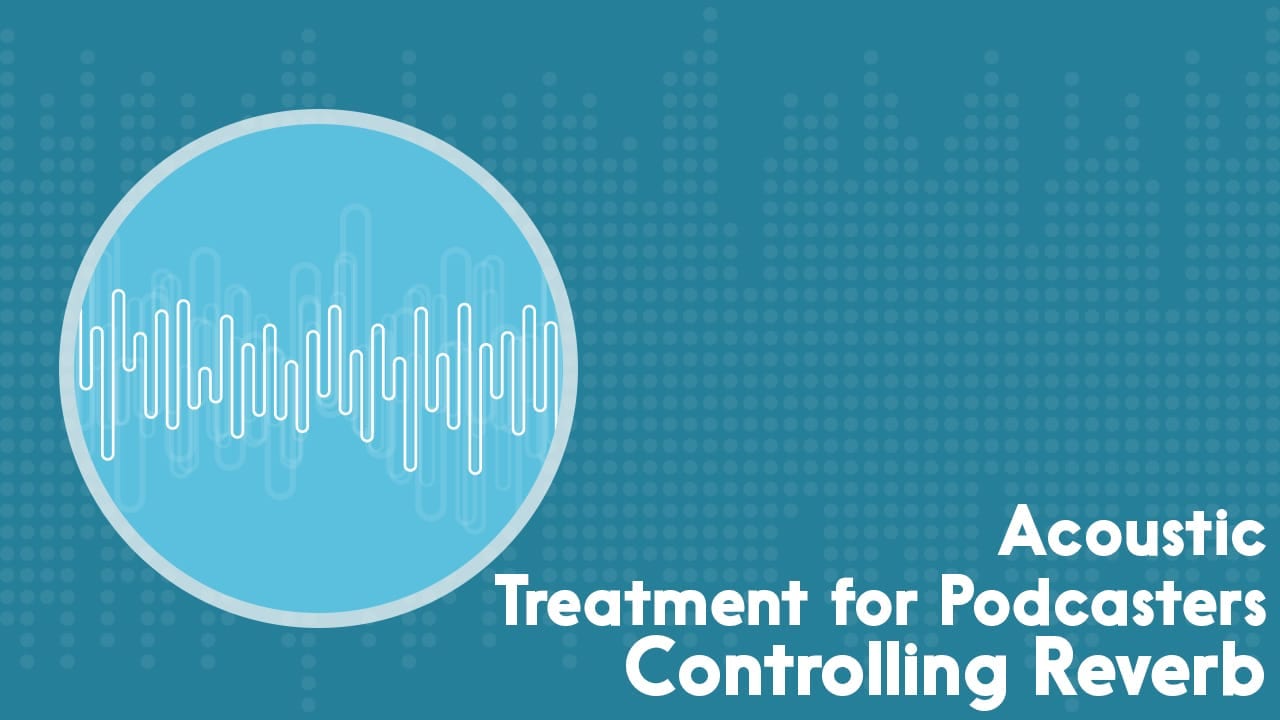How to Create a Silent Home Podcast Studio That Sounds Great
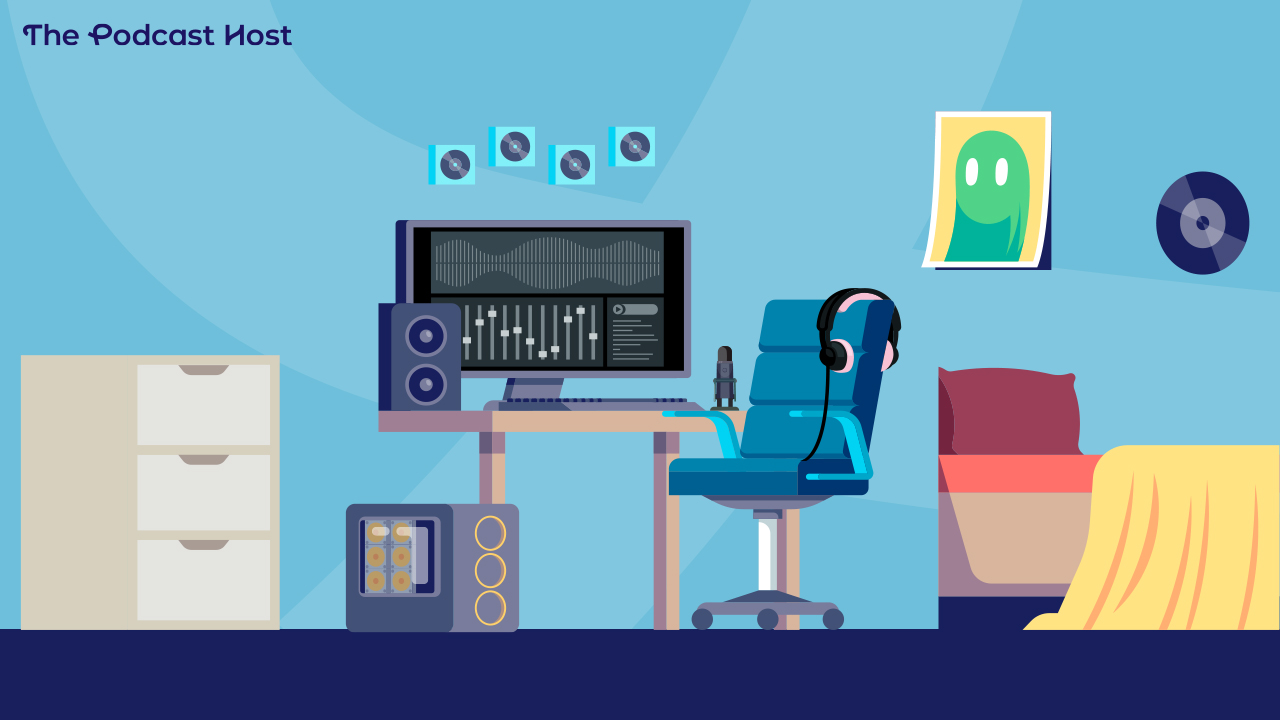
The term “home podcast studio” can mean different things to different people. For some, it means soundproofed walls, a large sleek padded table, and multiple mics running onto a mixer. For others, it means a USB mic sitting in a cat bed (more on this later!). The bottom line is that creating a pro-sounding home podcast studio is possible, no matter how small your budget or house space.
In this article, I’ll run you through the key considerations and various options when it comes to setting up your own home recording space. The aim is to get you recording pro-sounding audio as soon as possible, and for as little money as possible. After all, we don’t want poor sound to get in the way of doing what matters most – actually launching your show.
Let’s kick off by looking at a few terms you’ve probably heard before…
Sound Proofing, Or Sound Treatment?
Firstly, it’s worth clarifying something that many podcasters tend to get confused over.
There’s a big difference between sound “proofing” and sound “treatment”.
To “soundproof” a room means you are isolating it from any unwanted external noise elsewhere in the building.
There’s a misconception that by putting up some foam acoustic tiles on a wall you’re “soundproofing” the room. But that isn’t going to have any impact on noise bleeding through from outside.
We’ll talk about soundproofing further on. But first, what about sound treatment?
To “sound treat” a room means you are going to improve the audio quality within that room. So why might you want to do that?
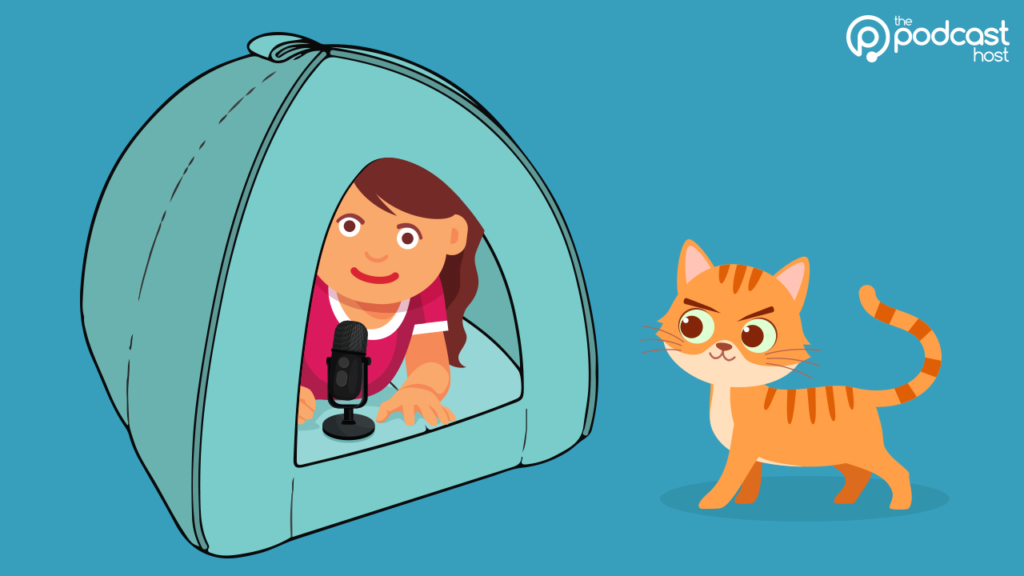
Acoustics & Reverb
Buying a top of the range podcast microphone or premium podcasting gear is all well and good, but if you’re recording your show in a bathtub it’s still going to sound bad. Here we need to focus on the sound quality of the space, and choose a space to find characteristics of a recording studio rather than a squash court.
Excessive reverb or echo on your voice can make your show sound amateurish. A room with a lot of hard and bare surfaces will have your voice bouncing around like a pinball machine.
On the other hand, a room with a lot of soft and furnished surfaces will prevent that from happening. Think of the way your voice sounds in the bathroom, compared to in the bedroom.
Finding the best sounding room or podcasting space in your house is a great starting point if it isn’t possible to get a dedicated podcast room set up. For most people, improvisation is key…
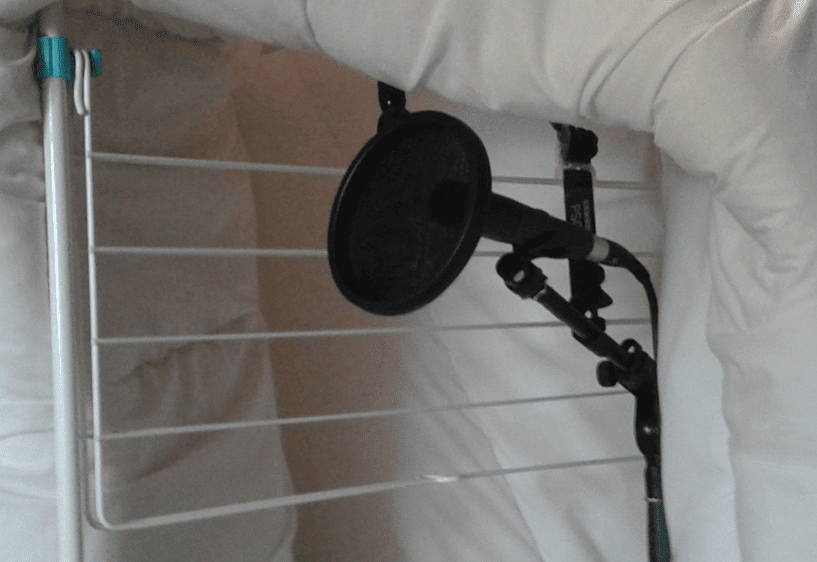
Improvising Your Home Podcast Studio
There are numerous reasons why you might not be able to create your own dedicated podcast room or podcast home studio. Whether you share the house with your family or flatmates, or you simply don’t have the space, a permanent setup isn’t an option for everyone.
So what are your options?
- Use a pre-existing area. This might simply be the best sounding (softest furnished) room in your house, or it might be a walk-in wardrobe full of hanging clothes. Anything to cut down on ambient noise.
- Localised treatment. Instead of worrying about the sound of the room as a whole, create a small ‘studio’ around yourself and your audio equipment. Here, you can pop your mic into a cat bed or surround it with pillows. Or, you could drape a duvet over a clothes rack and get inside it with your microphone. Granted, with these setups you might look a bit silly when you’re recording, but remember, we’re working in audio. Whatever setup you put together though, just make sure it’s comfortable enough to actually record a full podcast episode with. High-quality audio is one thing, being able to walk the next day is another!
Kill the reverb in ANY room for less than $15 by simply popping your mic into a cat bed!
Semi-Permanent Setups
If you’ve got a bit more room in your house you can set up a home podcast studio that can still be used for other non-audio related purposes.
You can buy or make sound-treated baffling boards or partitions on stands. These can be set up to form a mini ‘deadroom’ around your recording area and can be tidied away afterwards – though you’ll still need a reasonable amount of room to store them.
Another option is to use acoustic blankets or curtains which can be hung on rails or hooks.
Though these are easier to tidy away, they are a bit more permanent in the sense that you’re probably going to have to attach something to your wall to support them. For more on this, check out our review on using acoustic blankets for podcasting.
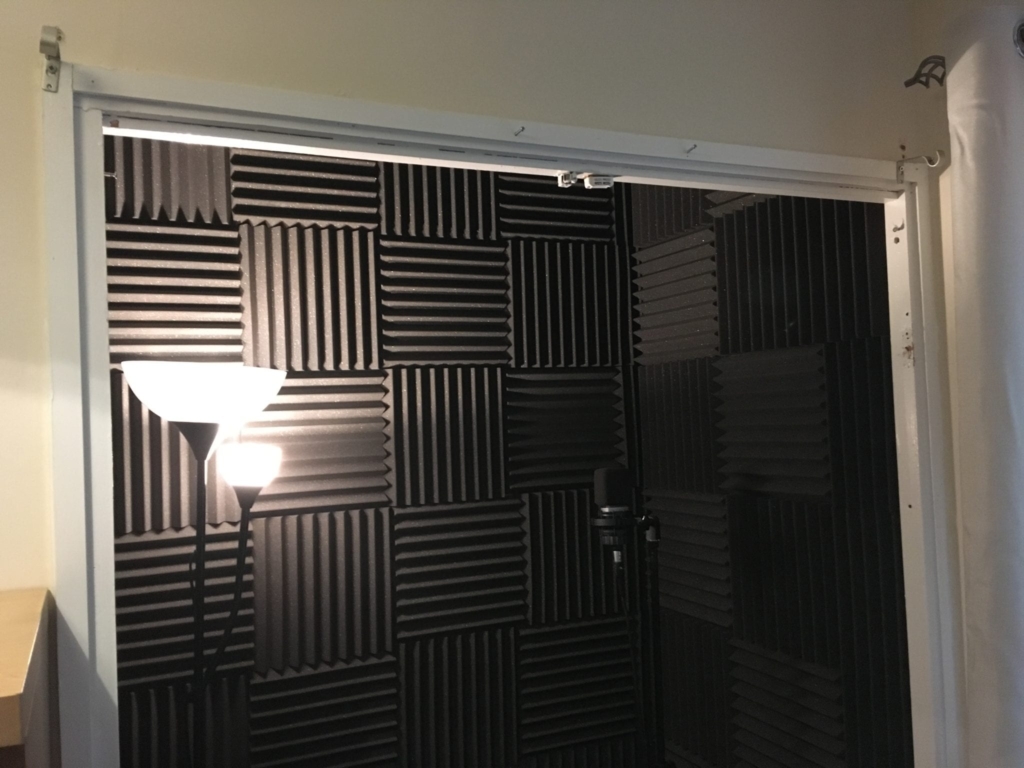
Permanent Setups
If you do have the luxury of commandeering a spare room or walk-in cupboard, then life immediately becomes a whole lot easier.
I converted a walk-in cupboard in my house into a home studio/vocal booth a couple of years ago. I measured the walls, ceiling, and door, before ordering an equivalent amount of 12″ x 12″ acoustic foam tiles.
I deliberated over how I was going to attach them to the wall. There were a few different options.
- Velcro tape – not the cheapest, and I had visions of the tiles falling off too much.
- Specialist adhesive – designed specifically for these tiles. Quite expensive and a bit too permanent.
- Glue – far too permanent. If I move house I want to take my tiles with me, without leaving bits of them all over the walls.
We were decorating the rest of the house at the time so I tried some wallpaper paste. It worked a treat holding the tiles firmly in place, and when I peeled one off it left very little foam stuck to the wall.
None of the tiles have fallen off (over 2 years later), not even the ones on the roof.
If you have this luxury, you might want to think even more about the aesthetics, so that the space can double as a video studio or a place to grab photos to help promote your show. Video can be a great way to help promote a podcast as part of your content stack. I found a good article over at Porch which has some good ideas on how to level up the look of the space, for video.

Sound Proofing a Room
Maybe you have a spare room that you plan to turn into a permanent home podcast studio. Before you go ahead and dive in though, there are a few things to consider.
Will sound treatment alone be enough?
Unless you’re custom building a room from scratch, soundproofing is very much about prevention, rather than cure…
External/Internal Noise Considerations for Your Home Podcast Studio
Here are some considerations when aiming to make your home podcast studio silent from unwanted noise.
- Are any of the walls of the room external or joined to your neighbour’s house? Does your neighbour tend to play the drums, watch the television at a high volume, or have a dog that never stops barking?
- Is there a window in the room? Does it back onto a busy street with lots of noise outside?
- Does the room have anything in it that might make noise? By this, I mean anything that can’t be moved. A boiler, a gas meter that clicks sporadically, that sort of thing.
- Are you recording near an AC unit, or even, a loud fridge? You can turn a fridge off, but it’s almost certain that you’ll forget to turn it back on. One great tip for this comes from Ric Viers (The Sound Effects Bible) who suggests putting your keys or wallet in the fridge when you unplug it. Be warned, this is always a good one to have to explain when someone else inevitably finds them in there!
Though you can deaden a room from reverb, external noises are a different thing altogether, so take this all into consideration before you go and buy $200 worth of sound treatment.
If the bulk of unwanted noise comes from outside then you might get away with blocking up the window. But if the building has paper-thin walls that bleed sound then you’d probably be better off just recording in your car, or even outside.
Don’t Forget the Sound Quality Basics of a Home Studio
Sure you can spend days, weeks, or even months developing the right space or surrounding for your studio. But don’t neglect the absolute basics. While we probably don’t have to remind you, here is a quick list of things to prioritise in your home Podcast studio.
- Use a quality microphone, whether it is a USB microphone or an XLR mic, don’t forget this. Ultimately, the input you use affects the output you get.
- Buy or make a pop filter for your microphone. No one likes going deaf from exuberant plosives.
- Headphones are an absolute must-have. Quality here is less important but you’ll find that headphone comfort for your longer recordings is key.
- Choose a software package that works best for you. That might be a Digital Audio Workstation like Audacity or Audition, or it might be a ‘Podcast Maker’ app like Alitu.
By the way, Redfin reached out to several podcast experts (including us!) to get the best advice on how to create the ultimate podcast space in your house. From installing noise buffering materials to helping you create a cosy, quiet, and welcoming environment, these tips can help take your space and your podcast to the next level. Check out 12 Expert Tips to Create the Ultimate Podcast Space.
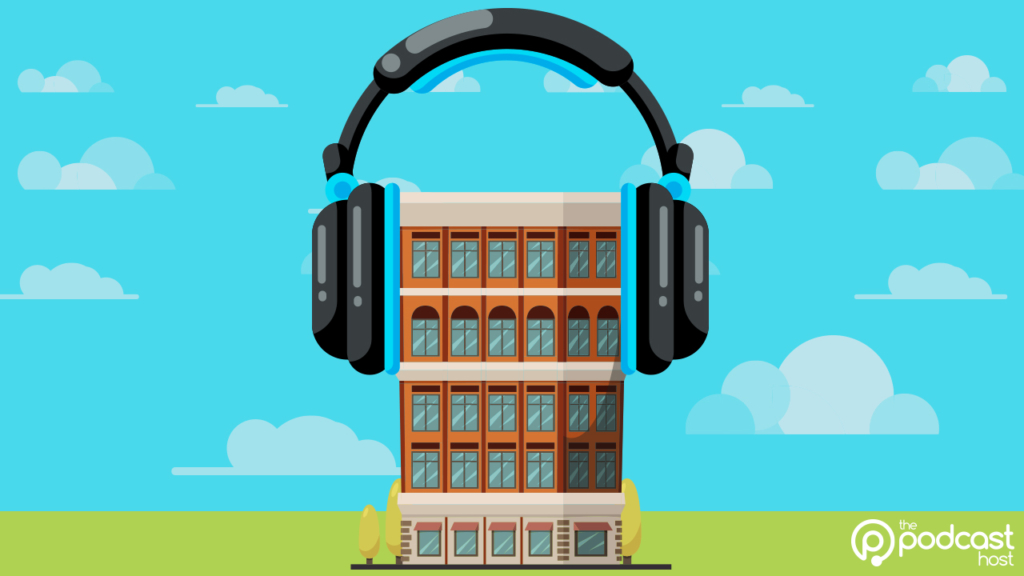
Summary – Home Podcast Studio Considerations
With all that in mind, you need to decide what best suits you, your home, your budget, and your podcast.
Is it vitally important that you have no reverb or background ambience at all? This might be the case if you’re running a business show and you want it to sound really professional, or if you’re recording something like an audio drama.
If not, then your home podcast studio might take the form of a bedroom, with a few cushions propped around the mic. Or even, the aforementioned cat bed! That’ll do just fine for most.
If you need to get the cleanest sound possible but have no permanent space, then it’s going to add a bit of time to your podcasting schedule to allow you to set up and dismantle your temporary ‘home studio’.
External and internal sounds that you have no control over can creep into your recordings so you need to decide which ones you can live with, and which ones you’d really rather not hear in your podcast.
Finally, do you have any money to spend on foam tiles or acoustic blankets, or do you need to use household items (duvets, towels, etc) for your sound dampening? The latter can be just as effective, even if they don’t look as good, so don’t worry if you’re working with a small to non-existent budget.

Need More Help Improving Your Audio?
Prevention is always better than cure, and recording the best possible source material is key to running a great-sounding podcast.
However, things don’t always go to plan, and we can’t often control everything. Sometimes there might be a bit of background noise you just can’t eliminate, from an AC Unit to a hissing guest microphone, so what can be done about it?
Well, there are tools out there that can help strip out unwanted noise and clean up your recordings. Not only that, they can boost and level up the volumes, and just generally make the vocals sound more “broadcastable”.
One such tool is the ‘Podcast Maker’ Alitu. With Alitu, you can record, edit, produce, and publish your podcast from within its dashboard. It’s easier to navigate than your average social media site, too. Get a 7-day free trial and check it out for yourself!
